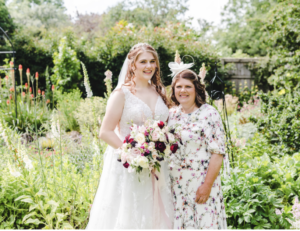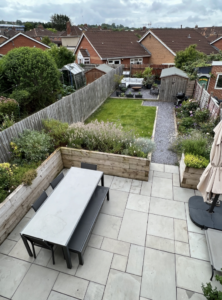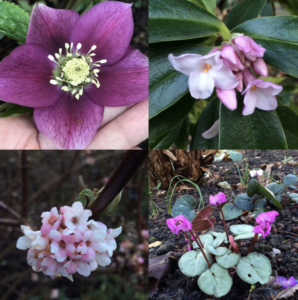We moved here to our third house and garden, approximately halfway between Gloucester and
Cheltenham, almost 26 years ago. The plot is ⅔ acre and the garden wraps around the house. It’s
taken time to get to grips with it, mainly because three weeks after moving in we had our fourth
child, and my husband, who still works full time at 69, has often had to work overtime and away
from home.
Our soil is clay, but there has been a garden here for ~120 years, so it’s been well worked,
although we have created new borders which initially were quite hard going. We have a gamut of
urban, railway and rural weeds since we’re on the edge of urbanisation and very close to the
mainline to London, including patches of nettles, which apparently is a sign of soil fertility,
buddlejas, brambles, bindweed and ragwort (an “illegal” weed as it’s toxic to equines and cattle
so it’s dealt with promptly).
Usually Winters here are relatively mild, but this last one managed to kill or damage quite a few
plants, mainly penstemons and ornamental sages, but that won’t stop me growing these beauties
again. I must remember to take cuttings though!
Other favourites are roses, mainly David Austin’s but also “Compassion”, “High Hopes” and
“Mountbatten”, peonies, daphne, dahlias, oriental poppies, hellebores, honeysuckle, jasmine and
herbs, many of which are grown in terracotta pots by the back door.
I love visiting gardens, and shows such as Malvern and Chelsea, for inspiration and perhaps to
buy plants, but I love it even more when people comment on how lovely the garden is, especially
after our daughter’s wedding here last Summer. It makes it all seem worthwhile

photo credit Marcus Ward bigeyephotography.co.uk

Our daughter and son-in-laws garden which I co-designed
Note the 4-sleeper high raised beds which are brilliant if you are able to stand to garden but can’t bend due to back problems
photo credit Victoria Minchener
If you’re new to gardening, perhaps with a disability, I encourage you to take it up – you can grow
fruit and veg to feed your stomach, and flowers to feed your soul. It’s also good exercise with lots
of fresh air and will help your mental health. It teaches you patience, and that it’s (often) okay to
make mistakes. Also, gardeners are usually generous with their knowledge, plants, seeds and
excess harvests, and generally long lived.
Grow the plants that appeal to you and which suit your conditions. The late, great Christopher
Lloyd famously got rid of his rose garden and replaced it with an exotic one. Conversely, we
ditched our veg patch and are turning it into a rose garden. Learn to recognise weeds and deal
with them before they flower and set seed! Finally, take a few moments to listen to the birdsong
and look at the sky, and encourage wildlife and pollinators to visit. Remember, bees don’t just
need Summer flowers but Winter ones also, and birds need long-lasting berries and seed heads.
Both need safe, shallow fresh water too

Some winter flowers for bees
Clockwise from top left: Lenten rose hybrid (Helleborus x hybridus),
Daphne bholua ‘Jacqueline Postill’, Cyclamen corm, Viburnum x
bodnantense ‘Dawn’

